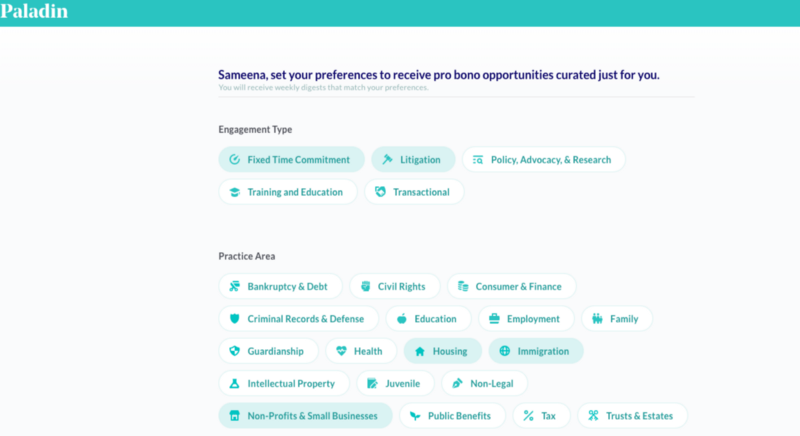Recent reports show that 5.1 billion people around the world – 2/3 of the world’s population – lack meaningful access to justice. Millennial attorneys may be motivated by more meaningful work, as are many of us; a survey of employees last year showed that 70% think companies should address societal problems, 85% said good corporate citizenship is important where they work, and 76% want their employers to make a difference in their communities.
Many corporations and law firms have had long-standing histories of supporting and encouraging volunteering and philanthropy, and a recent panel of women lawyers at the annual ChIPs Global Summit in Washington, DC in September talked about best practices for corporations and law firms to advance corporate social responsibility (CSR) and pro bono initiatives.
Microsoft Vice-President and Deputy General Counsel Linda Norman, Uber Senior Director of Litigation and Acting Associate General Counsel Nicole Bartow, and Procter & Gamble’s Global Government Relations and Public Policy Associate Director Tara Hogan Charles sat down with Goodwin Procter’s Boston Litigation Leader Elaine Herrmann Blais to share their thoughts.

The Business Case for Pro Bono and CSR Initiatives
The women noted there are many reasons an organization might want to create a program encouraging employees to volunteer and give back to their communities, beyond the obvious desire to help out their fellow humans. First, employees want to work for companies that align with their values and want to give back. Additionally, a CSR program can help “put a human face on your corporation”, which can help create a positive brand association. Sometimes, doing the right thing can get in the way of business; for instance, Gillette’s We Believe: The Best a Man Can Get video on toxic masculinity was simultaneously voted both the most liked and disliked video on YouTube. Charles noted that 60% of Procter & Gamble’s shareholders liked what they’re doing, and even if some of your shareholders do not, you still have to be authentic to your brand’s voice and do the right thing.
In another example, Microsoft developed and released adaptive gaming controllers for users with disabilities. Even though they were probably only going to be used by a small percentage of the gaming public and not destined to generate a huge amount of direct sales, the company fought to find funding and build them. “Not only was the goodwill good for business,” said Norman, “but it encouraged others in the business to think about doing bigger and better things around accessibility and other things.”
How to Get Your Leadership to Invest in Pro Bono or CSR Initiatives
But what if your law firm or corporation doesn’t value CSR or pro bono? You can get your leadership to invest more time, money or energy into such programs through a few actionable items. First, employee engagement surveys can show leadership how much they value the chance to give back and feel more connected to both their community and their colleagues. “Employee engagement scores for this type of work are through the roof for millennials and Gen Z employees in terms of engagement and happiness,” suggests Charles. Contrasting that directly with the vast costs of attrition and recruiting CSR could be a wise (and cost-effective!) investment.
Employee engagement surveys show that employees who engage in volunteer work through CSR or pro bono programs tend to score much higher on employee happiness.
Second, get your important clients or partners to partner on pro bono or CSR initiatives with you. Blais recommends asking a client to tell the firm it’s important to them and it’s more likely to happen; conversely, if you are at a corporation, ask an outside law firm to partner with you on it, driving home to leaders the value of joint work. “Sometimes in-house departments don’t have the infrastructure in place for large pro bono litigation,” said Blais, and a firm collaborating with a client’s inhouse legal team can allow the client to do more pro bono and deepen the relationship between the two organizations outside of billable experiences.
Third, formalize the requirements for pro bono or CSR; at the end of the day, you can’t manage what you don’t measure. It’s not about punishing people for not participating but, as Bartow said, it’s more about ensuring people getting credit for the work they do and showing how strongly participation is encouraged by leadership.
How To Get More Employees Involved in Pro Bono and CSR Initiatives
Once your leadership is on board, how do you get more employees involved, beyond tried and true pro bono/volunteer rock stars? Some of the same tactics for getting leadership to invest will work to get more employees involved too.
First, formalizing the requirements for pro bono or CSR involvement will help employees to think about participating. Requiring attorneys to write in year-end reviews how they met or did not meet pro bono goals can make them stop and think “well, why didn’t I get this done?”
Second, if senior management are directly involved in pro bono or CSR initiatives, it sets the tone that no one is too busy to take the time to do this work.
Third, try creating bite-sized programs to get people to engage the first time; Uber and Amazon often provide short volunteer opportunities for employees to complete over a lunch hour, which Norman calls “snackable” volunteering.
Fourth, make it easy for your employees to find and participate; having a central and easy place to browse for available opportunities is useful (note: Paladin can help with this!)
Fifth, encourage those already doing pro bono or volunteering to bring a friend. Not only will that make taking on matters feel less daunting but will help build community as well.
Last, find out what employees care about and help them find opportunities to make a difference in that arena, so that their volunteering is about more than just fulfilling a requirement. If your attorneys are motivated by working with certain communities of clients or doing a certain type of pro bono, find ways to serve those opportunities up to them. Look for tools like Paladin that let pro bono counsel tap into the passions and expertise of their lawyers or employees to help them find pro bono they’ll get excited about.

With a little emphasis on getting both employees and leadership to understand the value of volunteering their time and help them to find those opportunities, you can help your colleagues reduce the justice gap.
